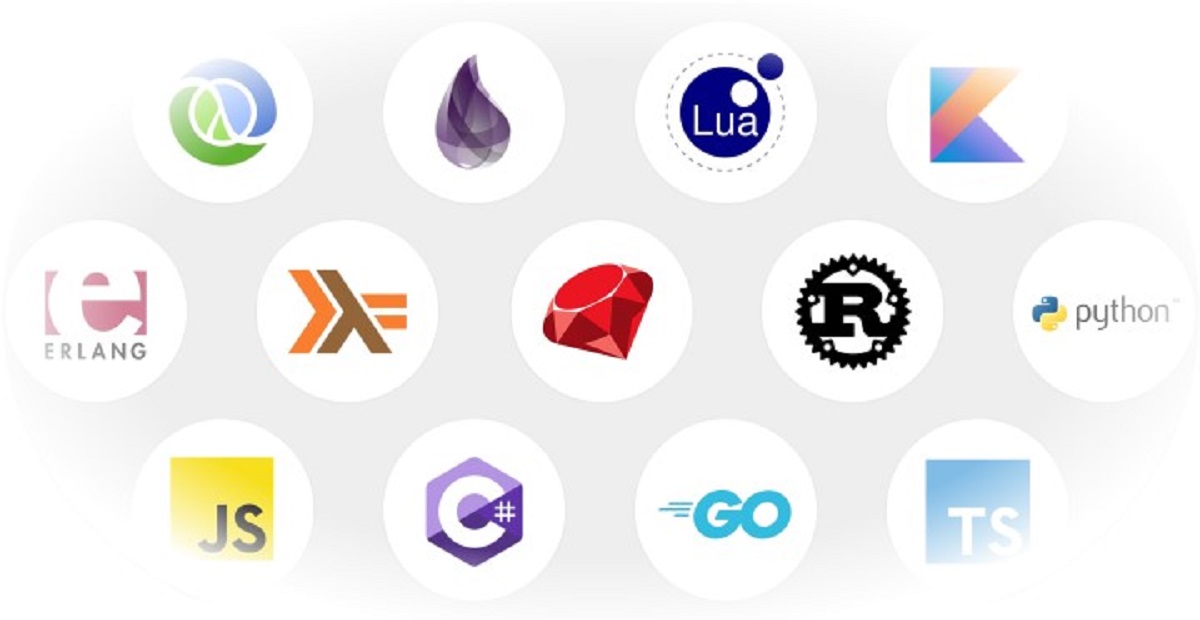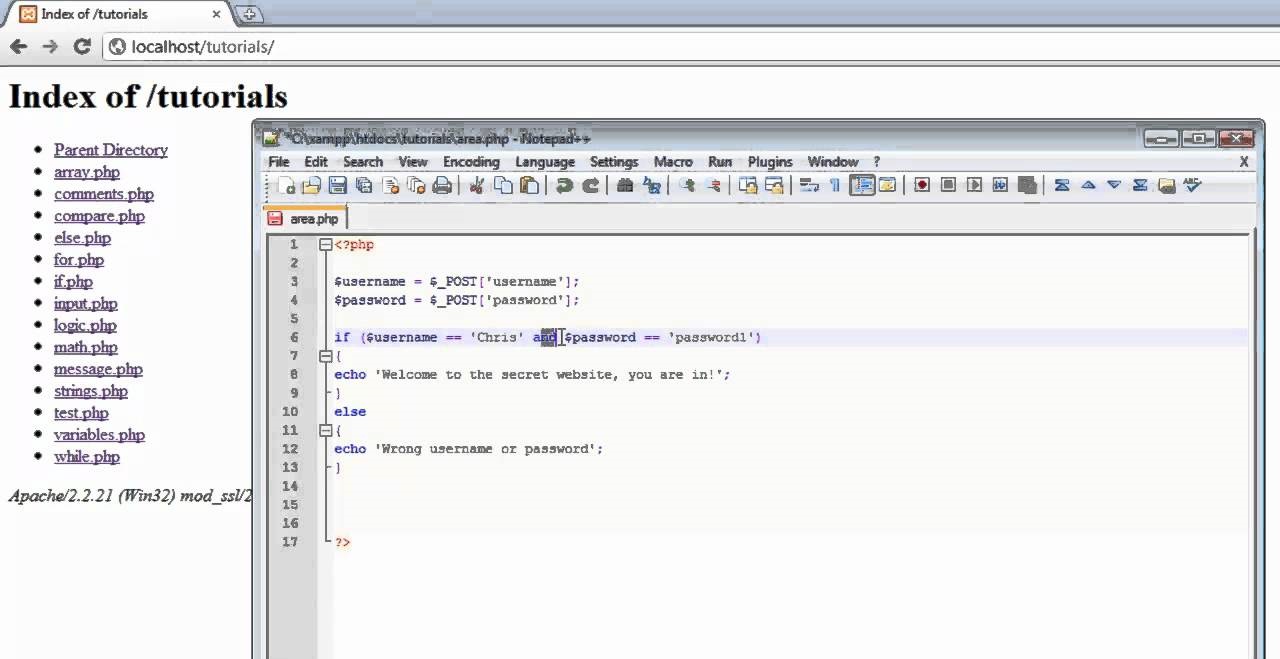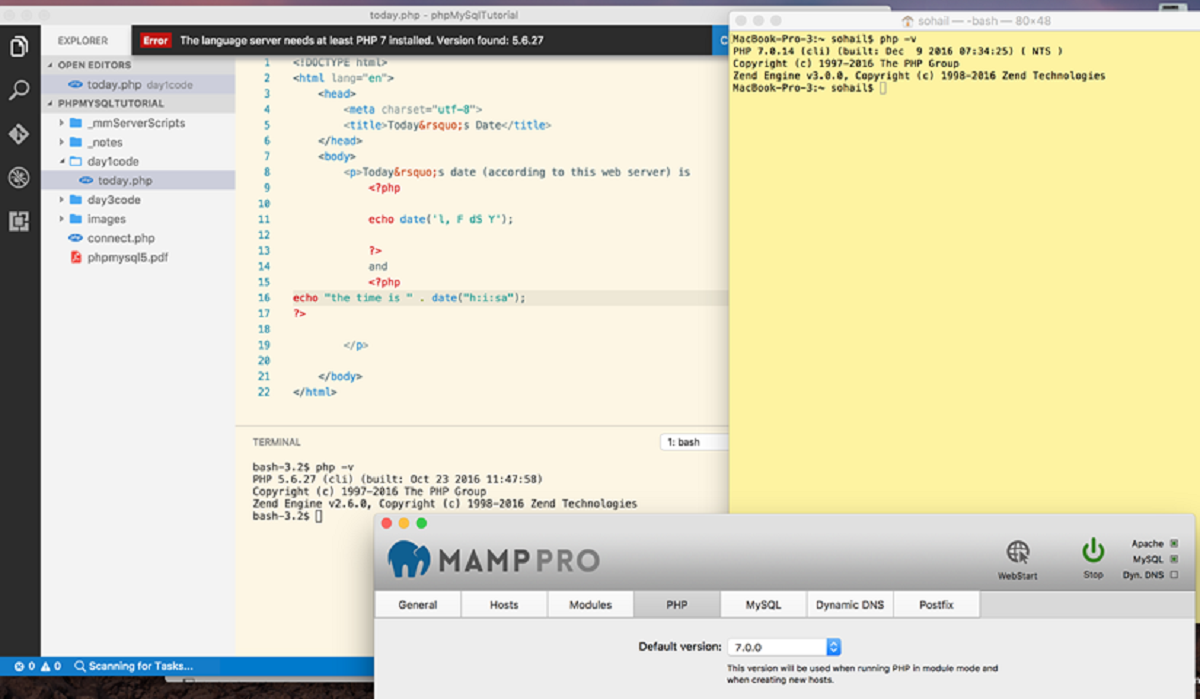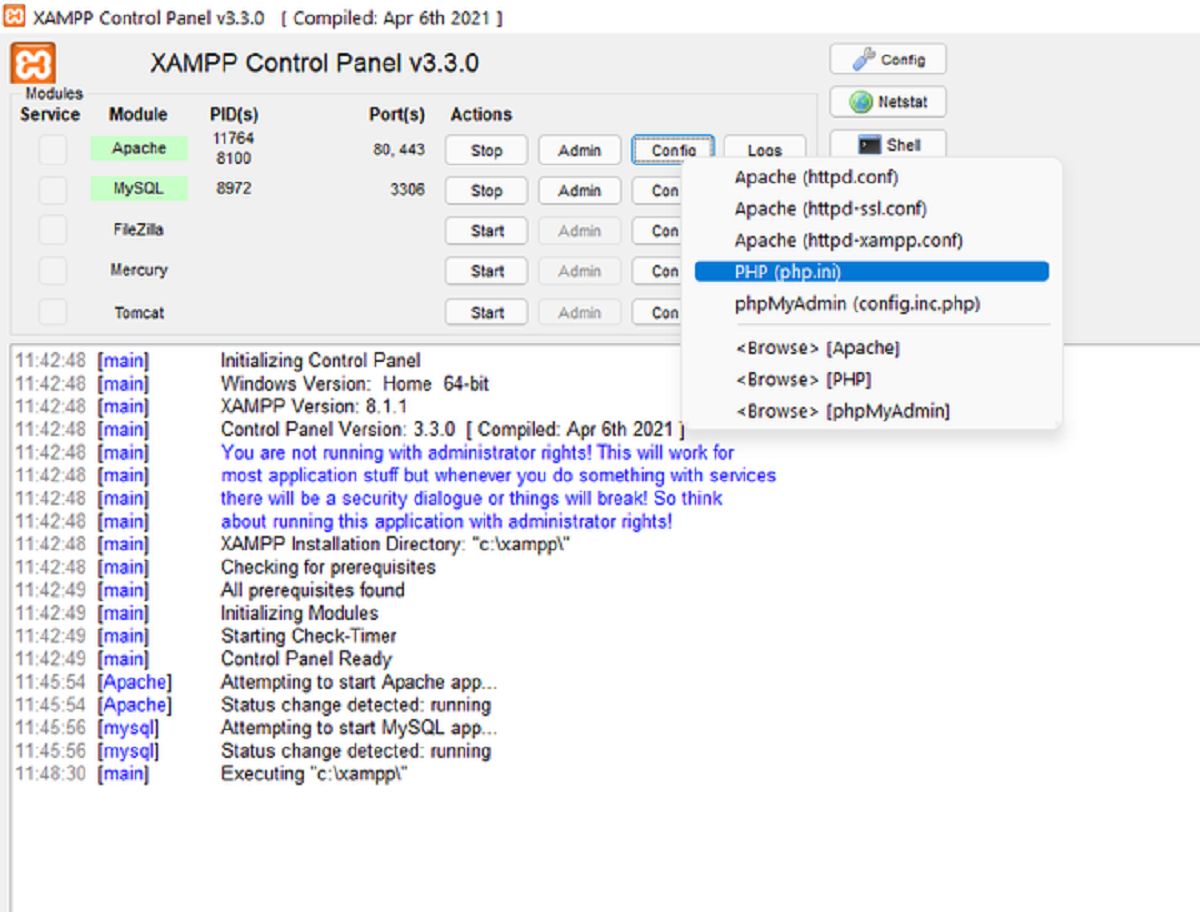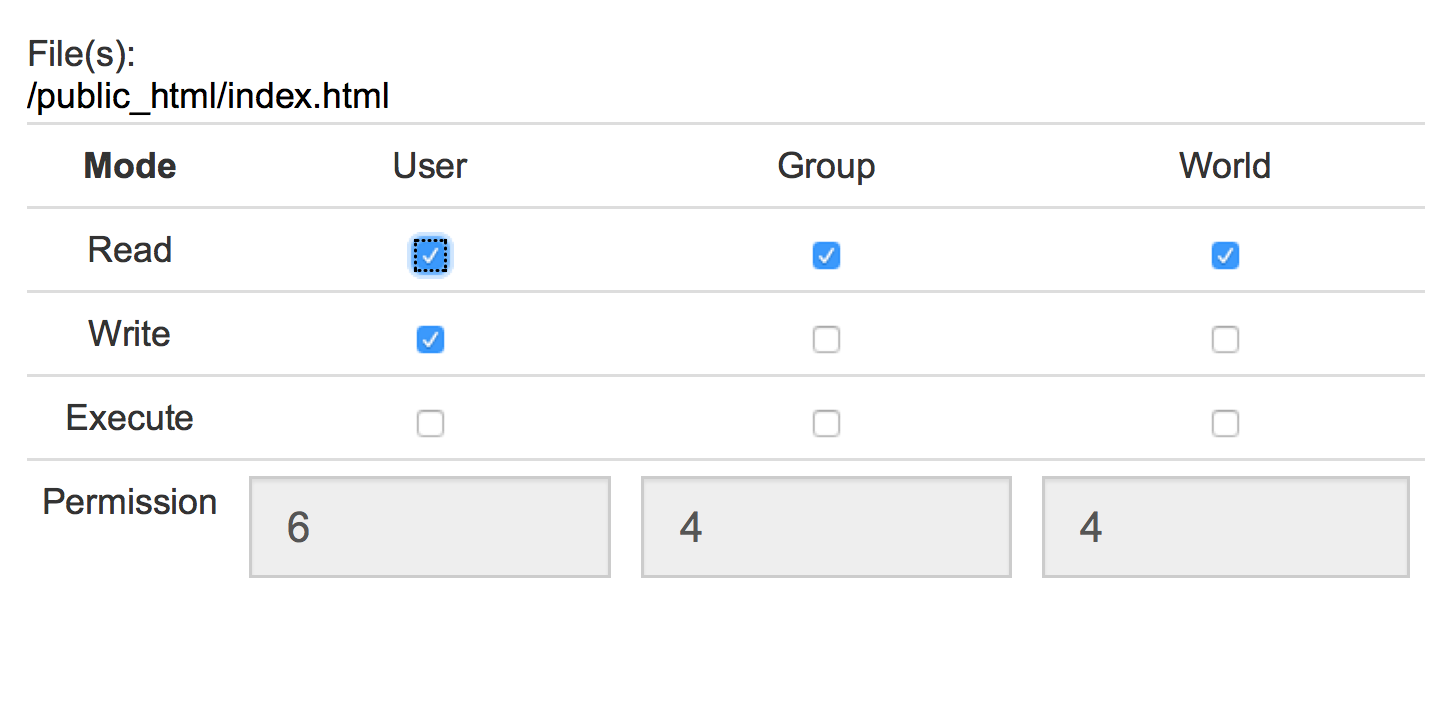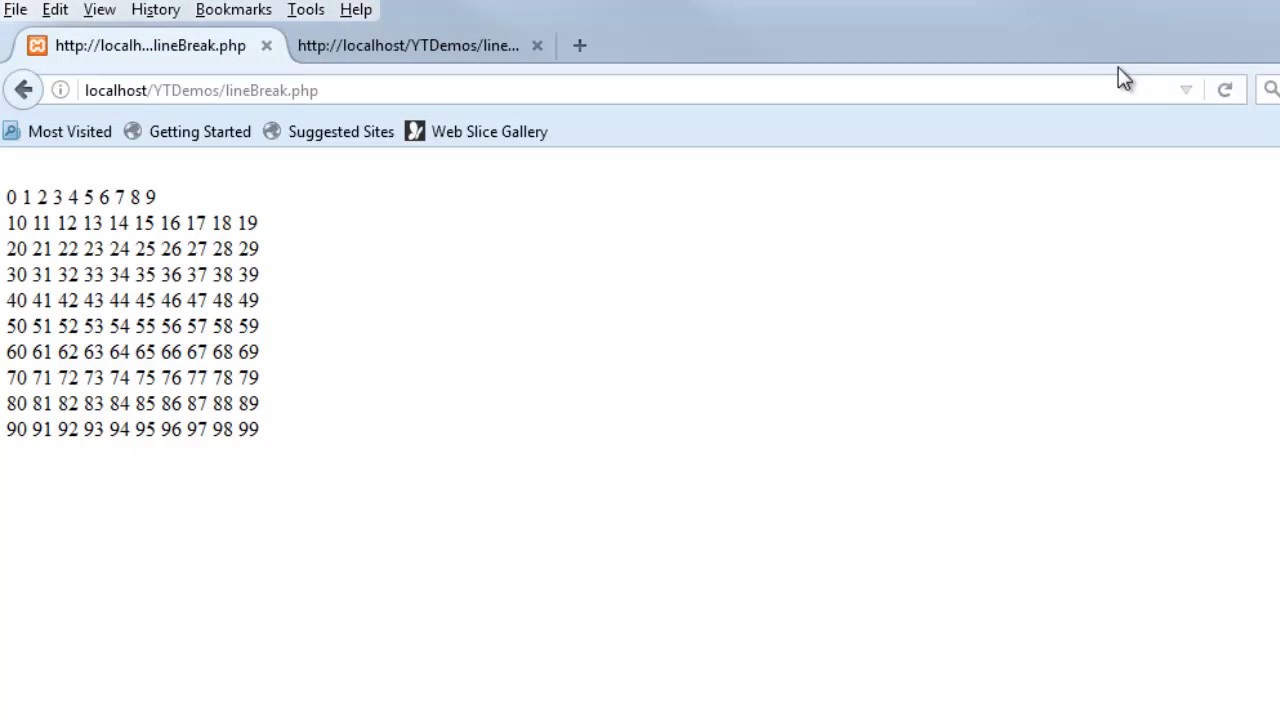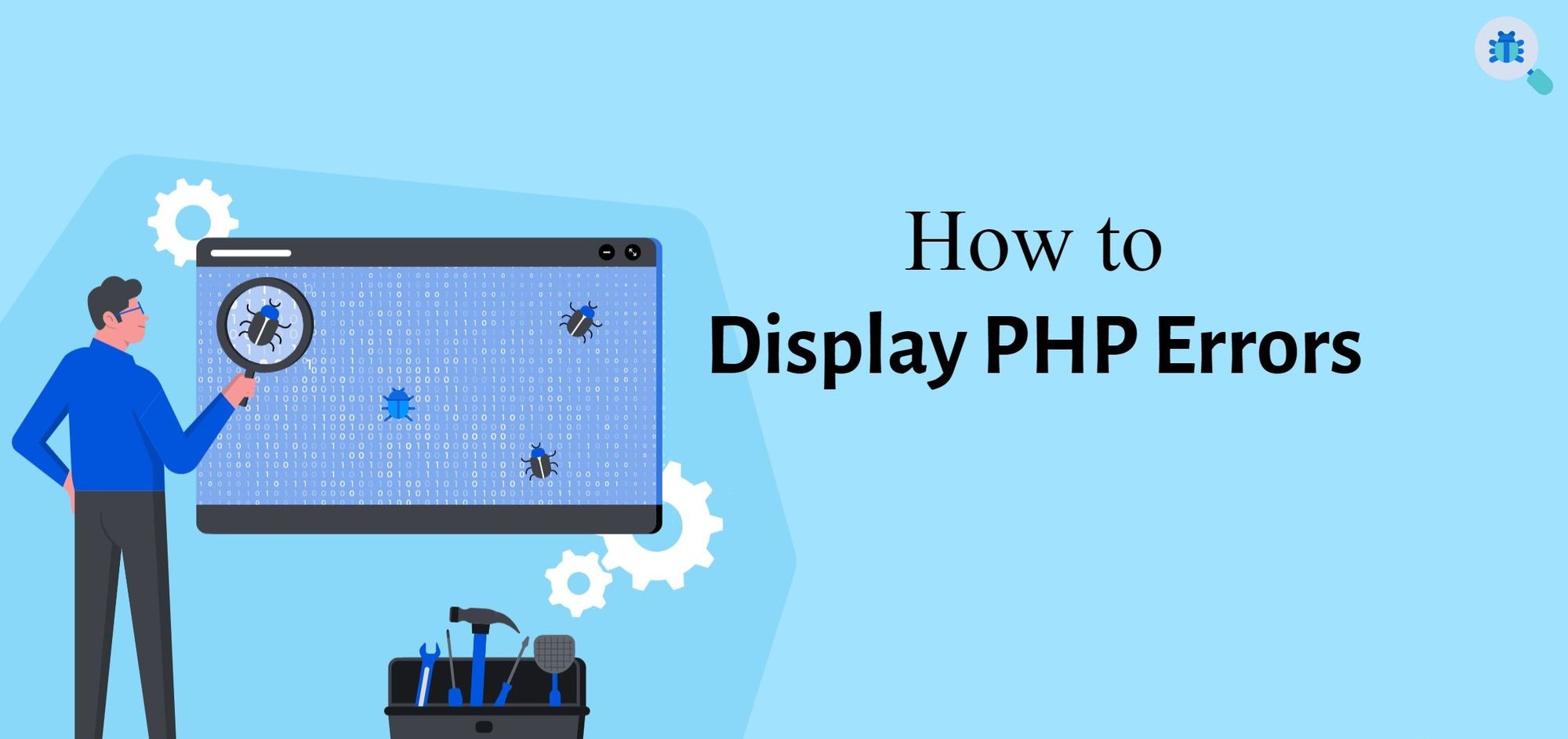Introduction
PHP is a widely-used, open-source scripting language that is widely regarded as one of the most popular options for web development. It was initially created in 1994 by Rasmus Lerdorf and has since evolved into a versatile language known for its ability to create dynamic websites and applications. Although PHP is unique in many ways, it also shares similarities with other popular scripting languages, such as JavaScript, Python, Ruby, Perl, Java, C#, C++, and Go.
In this article, we will explore PHP and its similarities to these scripting languages. By understanding these connections, you can gain a deeper understanding of PHP and explore new possibilities for your web development projects.
Before we dive into the similarities, it’s important to note that while PHP may share common features and syntax with these languages, each of them has unique characteristics that make them suitable for different purposes. PHP’s primary focus is on web development, while the others may have broader applications across various domains.
Now, let’s delve into the similarities between PHP and these popular scripting languages to discover the shared elements and potential crossover.
PHP: A General-purpose Scripting Language
PHP is a powerful scripting language that is often used in web development to create dynamic and interactive websites. However, its functionality extends beyond just web development. PHP is also considered a general-purpose scripting language, meaning it can be used for a variety of tasks.
One of the main reasons for PHP’s versatility is its vast array of built-in functions and libraries. These functions empower developers to perform a wide range of operations, such as manipulating strings, working with databases, handling files, and generating dynamic HTML content. This makes PHP an excellent choice for tasks such as data processing, scripting, and even command-line execution.
Furthermore, PHP’s simplicity and easy learning curve make it accessible to beginners while still providing advanced features for experienced programmers. Its syntax is similar to C and other popular programming languages, making it intuitive for those who have foundational coding knowledge.
Another noteworthy aspect of PHP is its cross-platform compatibility. PHP can run on most operating systems, including Windows, macOS, Linux, and Unix. This allows developers to create PHP applications that can be seamlessly deployed across different platforms, making it a versatile choice for projects targeting a diverse user base.
Additionally, PHP’s integration capabilities make it a valuable tool for developers. It can easily communicate with databases, web servers, and other technologies, allowing for seamless data retrieval and manipulation. With built-in support for various protocols, including HTTP, FTP, and SMTP, PHP enables applications to interact with external systems effortlessly.
In summary, PHP’s status as a general-purpose scripting language lies in its ability to handle a wide range of tasks beyond web development. Its extensive library of functions, simplicity, cross-platform compatibility, and integration capabilities make it a flexible choice for various projects. Whether you are looking to build a website, develop a command-line application, or automate tasks, PHP offers the tools and features you need.
Similarities to JavaScript
PHP and JavaScript, despite their different roles in web development, share several similarities that stem from their origins as scripting languages. Both PHP and JavaScript are server-side and client-side scripting languages, respectively, enabling them to work together to create dynamic and interactive web pages.
One of the main similarities between PHP and JavaScript is their ability to handle form data. Both languages have built-in functionality to capture user input from web forms and process it. They can validate the input, perform calculations, and interact with databases to store or retrieve the data. This makes PHP and JavaScript essential tools in creating robust and interactive web forms.
Another similarity between PHP and JavaScript is their support for string manipulation. Both languages provide a wide range of functions and methods to manipulate strings, such as concatenation, replacing substrings, splitting into arrays, and more. This allows developers to manipulate and format text effectively, whether it’s for generating dynamic content or performing data transformations.
Furthermore, PHP and JavaScript share similarities in their syntax and basic programming concepts. Both languages use variables to store and manipulate data, support conditional statements (if/else), loops (for/while), and provide functions for code reuse. This similarity in syntax makes it easier for developers to switch between PHP and JavaScript and leverage their knowledge for both server-side and client-side scripting tasks.
Additionally, PHP and JavaScript have powerful libraries and frameworks that simplify development and provide additional functionality. For PHP, frameworks like Laravel and CodeIgniter offer features such as routing, database abstraction, and authentication. Similarly, JavaScript has libraries and frameworks like React, Angular, and Vue.js, which provide tools for building interactive front-end applications. These libraries and frameworks enhance productivity and enable developers to create web applications more efficiently.
In summary, the similarities between PHP and JavaScript lie in their ability to handle form data, manipulate strings, and their shared syntax and programming concepts. Developers who are proficient in PHP can leverage their knowledge to work with JavaScript and vice versa, making them versatile languages for web development projects.
Similarities to Python
PHP and Python, two enduring programming languages, offer distinct advantages and are widely used in different domains. However, they also share certain similarities that make them powerful and versatile languages for various purposes.
One of the notable similarities between PHP and Python is their focus on readability and ease of use. Both languages prioritize clean and readable code, facilitating collaboration and maintenance. This emphasis on readability makes it easier for developers, both beginners and experienced, to understand and work with code written in either language.
Additionally, PHP and Python share a strong emphasis on community support. Both languages have large and active communities that contribute to the development of libraries, frameworks, and tools. This community-driven approach ensures the availability of comprehensive documentation, tutorials, and resources that aid in the learning process and enhance productivity for developers in both PHP and Python.
Furthermore, PHP and Python provide extensive support for databases, making them suitable for building applications that require database integration. PHP has a broad range of database extensions that allow developers to connect and interact with various database systems, including MySQL, PostgreSQL, Oracle, and SQLite. Similarly, Python offers robust libraries such as SQLAlchemy and Django ORM, which provide convenient and efficient ways to work with databases.
Both PHP and Python also offer support for object-oriented programming (OOP) concepts. While PHP introduced OOP in later versions, it has evolved to include features such as classes, inheritance, and encapsulation. Python, on the other hand, has native support for OOP and is known for its simplicity and elegance in implementing object-oriented principles. This similarity allows developers proficient in either language to leverage their OOP skills and work with standardized practices.
Moreover, PHP and Python both excel in web development. While PHP has historically been used for server-side scripting, Python has gained popularity in web development with frameworks like Django and Flask. These frameworks provide robust tools and features for building web applications, making both PHP and Python attractive options for web developers.
In summary, the similarities between PHP and Python lie in their focus on readability, strong community support, database integration capabilities, support for object-oriented programming, and their relevance in web development. These commonalities enable developers proficient in either language to explore and leverage their skills in different domains, making PHP and Python versatile choices for various programming projects.
Similarities to Ruby
PHP and Ruby, two popular scripting languages, share several similarities that make them suitable choices for web development and beyond. Both languages prioritize developer productivity, focusing on simplicity and expressiveness to create elegant and efficient code.
One of the main similarities between PHP and Ruby is their emphasis on readability. Both languages encourage developers to write code that is easy to understand and maintain. This shared focus on clean code makes it easier for developers to collaborate on projects and enhances the overall quality of the codebase.
Additionally, PHP and Ruby share a similar philosophy of making developers’ lives easier by providing extensive libraries and frameworks. In PHP, frameworks like Laravel and Symfony offer a wide range of features and tools for building robust web applications. Similarly, Ruby has its own set of powerful frameworks like Ruby on Rails, Sinatra, and Hanami, which promote rapid development and follow the principles of convention over configuration.
Furthermore, PHP and Ruby provide support for object-oriented programming (OOP) paradigms. Both languages enable developers to create reusable and modular code by utilizing classes, inheritance, and encapsulation. This similarity allows developers familiar with one language to quickly adapt to the other and apply their knowledge of OOP concepts.
Another shared characteristic of PHP and Ruby is their active and passionate communities. Both languages have vibrant communities that contribute to the development of libraries, packages, and open-source projects. The extensive resources and support available within these communities make it easier for developers to learn, solve problems, and stay up to date with the latest trends and technologies in PHP and Ruby.
Moreover, PHP and Ruby provide thorough database integration capabilities. PHP offers a variety of extensions for connecting to different databases, allowing developers to efficiently work with popular database management systems. Ruby, with its ActiveRecord library, provides an elegant and intuitive interface for interacting with databases, making data manipulation and retrieval seamless.
In summary, the similarities between PHP and Ruby lie in their focus on readability, emphasis on developer productivity through extensive libraries and frameworks, support for object-oriented programming, active communities, and robust database integration capabilities. These shared characteristics make both PHP and Ruby efficient and flexible languages for various web development projects.
Similarities to Perl
PHP and Perl, two dynamic scripting languages, share certain similarities that stem from their origins and their focus on providing powerful and flexible tools for developers. Both languages offer features that facilitate text manipulation, data processing, and automation, making them suitable for a wide range of tasks.
One of the notable similarities between PHP and Perl is their strength in handling regular expressions. Both languages have extensive support for regular expressions, allowing developers to perform advanced pattern matching and text manipulation operations. This makes PHP and Perl valuable tools for tasks such as data validation, parsing, and search and replace operations.
Additionally, PHP and Perl are renowned for their versatility in processing text and files. Both languages provide robust functions and libraries for manipulating strings and working with files. Whether it’s reading and writing files, parsing CSV or XML data, or performing complex textual transformations, PHP and Perl offer effective solutions to streamline these operations.
Furthermore, PHP and Perl both have a rich collection of libraries and modules that enhance their capabilities. PHP has the PHP Extension Community Library (PECL), which offers a wide range of extensions to extend the language’s functionality. Perl, on the other hand, has the Comprehensive Perl Archive Network (CPAN), a vast repository of modules that provide solutions for various programming tasks. These libraries and modules expand the possibilities and productivity for developers working in both PHP and Perl.
Another shared characteristic of PHP and Perl is their support for procedural and object-oriented programming paradigms. While Perl is often known for its flexibility in allowing different programming styles, both languages enable developers to choose between procedural and object-oriented approaches based on their preference and project requirements. This flexibility makes it easier for developers to transition between PHP and Perl smoothly.
Moreover, PHP and Perl share a devoted and active community of developers. These communities contribute to ongoing language development, share knowledge and resources, and provide support through forums, documentation, and tutorials. The strong community support for both PHP and Perl ensures that developers have access to valuable resources and assistance when building their projects.
In summary, the similarities between PHP and Perl lie in their capabilities for handling regular expressions, text manipulation, and file processing. Both languages provide extensive libraries and modules to extend their functionality, support procedural and object-oriented programming, and have dedicated communities of developers. These shared characteristics make PHP and Perl powerful and versatile scripting languages for a variety of programming tasks.
Similarities to Java
PHP and Java, two prominent programming languages, may serve different purposes and have different use cases, but they share several similarities that make them valuable tools for developing robust and scalable applications.
One of the main similarities between PHP and Java is their focus on platform independence. Both languages are designed to be run on a virtual machine, which allows developers to write code once and deploy it on multiple platforms without the need for recompilation. In Java, this virtual machine is known as the Java Virtual Machine (JVM), while PHP relies on an interpreter to execute its code. This shared philosophy of platform independence enables developers to create applications that can run on various operating systems and hardware architectures.
Another notable similarity between PHP and Java is their support for object-oriented programming (OOP) principles. Both languages have robust support for classes, objects, inheritance, and encapsulation. This shared similarity enables developers proficient in one language to easily transition to the other and leverage their understanding of OOP concepts to build well-structured and reusable code.
Furthermore, PHP and Java have strong communities that contribute to the development of frameworks and libraries. In Java, frameworks like Spring and Hibernate provide powerful tools for building enterprise-level applications, handling dependency injection, and performing database operations. Similarly, PHP has frameworks like Laravel and Symfony that offer a structured and efficient way to handle web development tasks. These frameworks enhance productivity and allow developers to build scalable and maintainable applications.
Additionally, both PHP and Java have built-in support for exception handling, which allows developers to handle and manage errors effectively. Both languages provide mechanisms for catching and handling exceptions, ensuring that applications can maintain stability and gracefully recover from errors.
Moreover, PHP and Java share similarities in their syntax and basic programming concepts. Both languages use semicolons to end statements, curly braces for code blocks, and support loops, conditional statements, and functions. This syntactic similarity makes it easier for developers to switch between PHP and Java and apply their knowledge of programming concepts in both languages.
In summary, the similarities between PHP and Java lie in their focus on platform independence, support for object-oriented programming, strong community support, built-in exception handling, and their shared syntax and programming concepts. These commonalities allow developers proficient in either language to leverage their skills and work on projects ranging from web development to enterprise-level applications.
Similarities to C
PHP and C, both widely used programming languages, share several similarities that stem from their origins and their focus on efficiency and low-level programming capabilities.
One of the main similarities between PHP and C is their syntax. PHP was originally inspired by C, and as a result, they have similar syntax and share many of the same basic programming concepts. Both languages use semicolons to end statements, curly braces to define code blocks, and offer support for loops, conditional statements, and functions. This syntactic similarity makes it easier for developers who are proficient in one language to understand and work with code written in the other.
Another notable similarity between PHP and C is their ability to interact with the underlying system and perform low-level operations. In C, developers have direct access to memory and can manipulate it at a granular level. PHP, although a higher-level language, provides features such as variable manipulation and direct file handling, allowing developers to perform low-level operations when necessary.
Furthermore, both PHP and C support procedural programming paradigms. Procedural programming in C involves breaking down the program into smaller functions or procedures, which can be called and executed as needed. PHP, while offering object-oriented capabilities, also supports structured and procedural programming. This similarity allows developers proficient in C to leverage their knowledge and apply procedural programming principles when working with PHP.
Additionally, PHP and C share similarities in their data types and variable handling. Both languages support various data types, including integers, floats, characters, and strings. They also provide the ability to declare and assign values to variables, as well as perform operations on them. This shared characteristic allows developers to easily work with variables and data in both languages.
Moreover, PHP and C both prioritize efficiency and performance. C is known for its ability to produce highly efficient and optimized code, as it allows for direct manipulation of memory and close interaction with the system’s hardware. PHP, while running on a higher-level virtual machine, also offers mechanisms for optimizing performance, such as caching and bytecode compilation. Both languages provide the tools necessary to build high-performance applications when performance is a critical factor.
In summary, the similarities between PHP and C can be seen in their syntax, support for low-level operations, procedural programming, handling of data types and variables, and their emphasis on efficiency and performance. These shared characteristics make PHP and C versatile languages that can be used to develop a wide range of applications, from low-level system programming to high-performance web applications.
Similarities to C++
PHP and C++, both powerful programming languages, share several similarities that make them valuable tools for building robust and efficient applications.
One of the main similarities between PHP and C++ is their syntax. PHP was influenced by C and C++, which has resulted in similar syntax between the languages. Both languages use semicolons to terminate statements, curly braces to define code blocks, and support loops, conditional statements, and functions. This syntactic similarity makes it easier for developers proficient in one language to understand and work with code written in the other.
Moreover, PHP and C++ both support object-oriented programming (OOP) paradigms. While PHP initially had limited support for OOP, it has evolved to include features such as classes, objects, inheritance, and polymorphism. C++ was designed to embrace OOP principles, providing developers with strong support for encapsulation, inheritance, and polymorphism. This shared similarity in OOP support allows developers to leverage their knowledge of one language when working with the other.
Furthermore, both PHP and C++ offer extensive support for handling arrays and manipulating data structures. Both languages provide powerful array manipulation capabilities, such as accessing individual elements, performing operations on entire arrays, and iterating over array elements. These features make it easier for developers to work with complex data structures and efficiently manipulate data.
Another shared characteristic of PHP and C++ is their efficiency and performance. C++ is known for its ability to produce highly efficient and optimized code, allowing developers to have fine-grained control over memory management and hardware interactions. Similarly, PHP offers mechanisms for optimizing performance, such as bytecode caching, opcode caching, and various caching extensions. Both languages provide the tools necessary to build high-performance applications when performance is a critical factor.
Moreover, PHP and C++ both have a range of libraries and frameworks that enhance their capabilities. C++ has a vast ecosystem of libraries for various domains, such as Boost for general-purpose programming, OpenCV for computer vision, and Qt for cross-platform development. Similarly, PHP has popular frameworks like Laravel and Symfony that offer a structured and efficient way to build web applications. These libraries and frameworks enhance productivity and enable developers to leverage existing solutions for their projects.
In summary, the similarities between PHP and C++ can be seen in their syntax, support for object-oriented programming, array manipulation capabilities, emphasis on efficiency and performance, and the availability of libraries and frameworks. These commonalities make PHP and C++ both powerful languages suitable for a wide range of programming projects, from web development to systems programming and beyond.
Similarities to Go
PHP and Go, two modern programming languages, share several similarities that make them versatile and powerful choices for building efficient and scalable applications.
One of the main similarities between PHP and Go is their focus on simplicity and readability. Both languages prioritize clean and concise code, making it easier for developers to understand and maintain projects. This emphasis on readability facilitates collaboration and contributes to the overall quality of the codebase.
Moreover, PHP and Go both have built-in support for concurrency. While PHP traditionally relies on a synchronous model, it has introduced extensions and libraries such as Swoole and ReactPHP to enable asynchronous programming and improve performance. Go, on the other hand, was designed with built-in support for lightweight concurrency through goroutines and channels. These features allow developers to write concurrent and highly scalable applications in both PHP and Go.
Furthermore, PHP and Go share a focus on performance. Go is renowned for its efficiency and ability to handle high traffic and concurrent requests. PHP, while being an interpreted language, offers features such as opcode caching and JIT compilation that enhance its runtime performance. Both languages provide the tools necessary to build high-performance applications, making them suitable for projects with demanding performance requirements.
Another notable similarity between PHP and Go is their support for web development. PHP has a long-standing history as a popular language for server-side scripting and web development. It has a mature ecosystem of frameworks and libraries, such as Laravel and Symfony, that simplify web application development. Go, although newer than PHP, has gained popularity for web development with frameworks like Gin and Echo. These frameworks, along with Go’s focus on simplicity and performance, make it an attractive option for building fast and scalable web applications.
Moreover, both PHP and Go offer strong community support. The PHP community consists of thousands of developers who contribute to open-source projects, provide support through forums, and create extensive documentation. Similarly, Go has a growing community that actively develops libraries, creates resources, and contributes to the language’s ecosystem. The availability of community-driven resources makes it easier for developers to learn, solve problems, and stay up to date with the latest trends and best practices in both PHP and Go.
In summary, the similarities between PHP and Go lie in their focus on simplicity and readability, support for concurrency, emphasis on performance, relevance in web development, and strong community support. These shared characteristics make PHP and Go powerful languages for developing a wide range of applications, from web services to high-performance concurrent systems.
Conclusion
In conclusion, PHP, as a general-purpose scripting language, shares various similarities with other popular programming languages such as JavaScript, Python, Ruby, Perl, Java, C#, C++, and Go. While PHP has its own unique features and strengths, these similarities allow developers to leverage their knowledge and skills across multiple languages, opening up new possibilities and opportunities in the world of programming.
From the similarities to JavaScript, we find common ground in their ability to handle form data, manipulate strings, and similar syntax and programming concepts, making them compatible and interchangeable for web development tasks.
Similarly, the similarities to Python highlight shared focuses on readability, community support, database integration, and support for object-oriented programming. Developers can transition between PHP and Python effortlessly, allowing for flexibility in various programming domains.
The similarities to Ruby showcase commonalities in readability, community support, text manipulation, and extensive libraries and frameworks. Both PHP and Ruby empower developers to build sophisticated web applications using elegant and efficient code.
With Perl, PHP shares similarities related to regular expressions, text manipulation, community support, and extensive library support, making both languages versatile in handling text processing and data manipulation tasks.
PHP and Java, known for their platform independence, object-oriented programming, exception handling, and community support, provide developers with powerful tools for building robust applications that can run on multiple platforms.
Additionally, PHP and C share similarities in syntax, low-level operations, procedural programming, and data handling. This allows developers proficient in either language to leverage their knowledge and skills to work in diverse programming domains.
Lastly, PHP and Go share similarities in readability, emphasis on performance, support for concurrency, and relevance in web development. The features and characteristics these languages share make them suitable for building scalable and efficient applications.
In summary, understanding the similarities between PHP and other programming languages allows developers to expand their skill sets, work in different domains, and discover new approaches to solving problems. Whether it’s web development, data manipulation, or system-level programming, PHP’s similarities to these languages provide valuable insights and possibilities for developers to explore.







